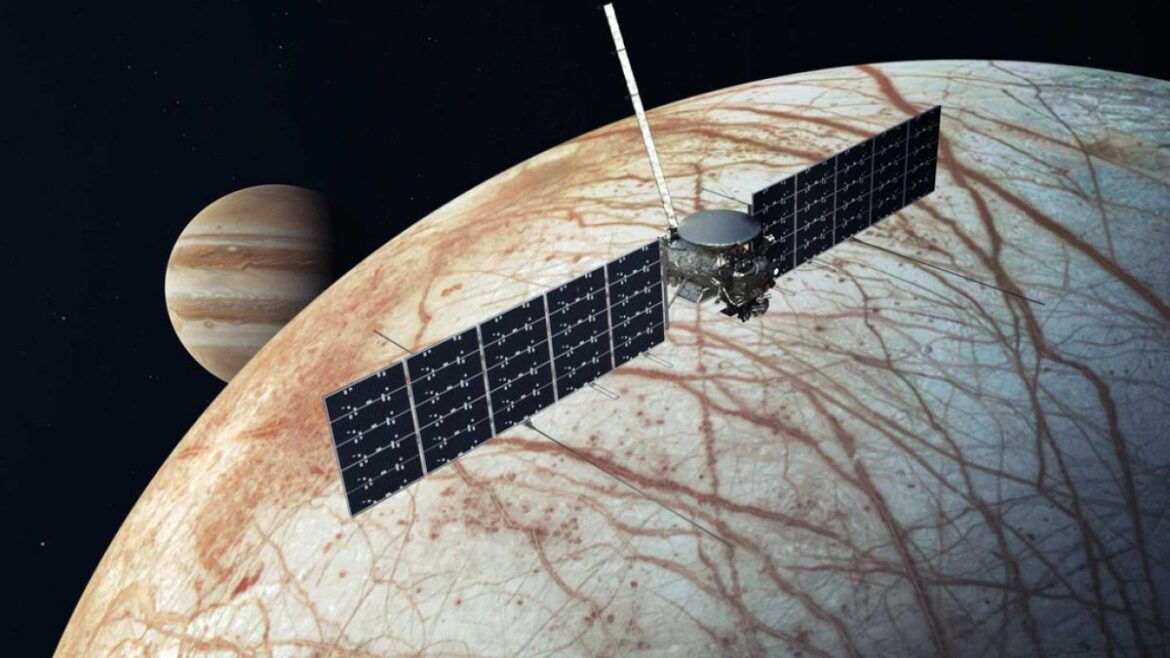The NASA probe successfully launched this Monday from Earth to Europa, one of Jupiter’s moons. An odyssey that will last more than five years. Objective: to examine the icy crust of an ocean observed on this star with the hope of discovering organic compounds conducive to life.
The small Europa Clipper space probe, successfully launched by SpaceX, began a long journey of more than three billion kilometers this Monday to Europa, one of Jupiter’s 95 moons. However, engineers and researchers will have to be patient. The probe will only reach its destination in five and a half years. It will then have to go into orbit around the gas giant, then will carry out dozens of flights over Europe.
Why this moon? Because scientists are almost certain that there is a vast ocean beneath its icy crust. But where there is water, there could be life, which makes this moon one of the most promising places.
Europa Clipper will not, however, look for life strictly speaking: the probe will have to make do with sensors capable of remotely identifying the ingredients necessary to maintain life, looking for organic compounds and other clues.
This audacious mission, costing around $5.2 billion, was almost derailed at the last moment when NASA discovered last spring that the Clipper probe’s transistors could be more vulnerable than expected to the intense radiation field. of Jupiter.
Clipper will undergo the equivalent of several million chest x-rays during each of the 49 flights over Europe. The American space agency therefore spent months examining everything before concluding in September that the mission could finally be launched as planned.
The size of a basketball court with its solar wings deployed, Clipper will pass in front of Mars then the Earth towards Jupiter to benefit from gravitational assistance. The nearly 5,700 kg probe is expected to reach the largest planet in the solar system in 2030.
Clipper will circle Jupiter every 21 days and come closer to Europa, close to our own moon in size. The craft will fly up to 25 kilometers above Europa, much closer than the few previous visits. An onboard radar will then attempt to penetrate the ice cap of this star, the thickness of which is estimated between 15 and 24 kilometers.
Beneath this crust, an ocean could be 120 kilometers deep or more.
The probe has a total of nine instruments, the sensitive electronics of which are stored in a vault with dense zinc and aluminum walls for protection against radiation.
The exploration will last until 2034. “Ocean worlds like Europa are not only unique because they could be habitable, but they could be habitable today”said NASA’s Gina DiBraccio on the eve of the launch.
If conditions prove favorable for life on Europa, it would open the possibility of life on other ocean worlds in our solar system and beyond, scientists say.
With an underground ocean and geysers, Enceladus, one of Saturn’s moons, is one of the other stars in the solar system to interest scientists.



